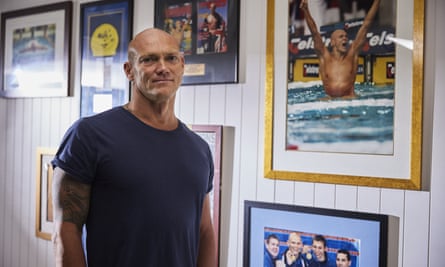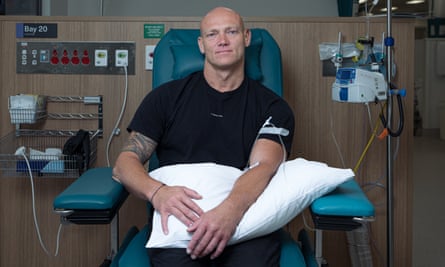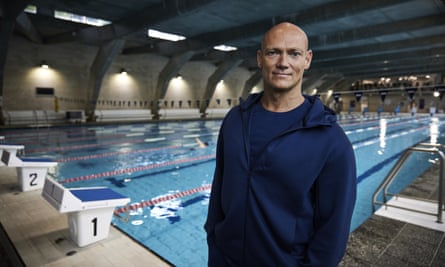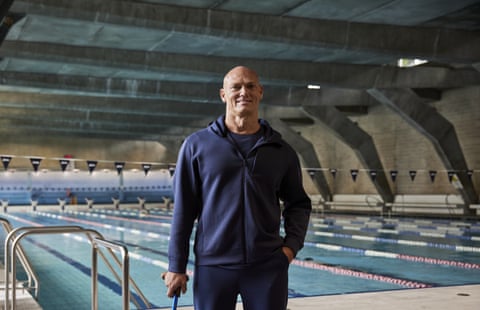Michael Klim was once a fixture on Australia’s national swimming team, driven by an unwavering dedication that is the signature of the best competitors. His career in the late 1990s and early 2000s coincided with a golden age for Australian swimming, as he competed alongside stars such as Ian Thorpe and Grant Hackett.
There were plenty of highlights, but for Klim, a few shone above the rest, including a charmed run in 1998. “The week I had at my first ever world championships at Perth,” he says. “Winning seven medals out of seven events, and four of them gold, was a pretty significant meet for me.”
At the top, though, was the chance to represent his country at home during the Sydney 2000 Olympics. “I was lucky enough to have three world records and two gold medals after day four,” Klim says. “It was a once-in-a-lifetime experience. Sometimes people don’t even have the opportunity to swim at an Olympic Games on home soil.”
Klim retired (for the first time) in 2007 and, after a brief comeback, finally hung up the Speedos for good in 2012, having wrung everything he could out of a stellar career with no more left to give.

Photo credit: Australian Red Cross Lifeblood.
“My body wasn’t really doing what I wanted it to do,” Klim says. It’s a sentiment that has taken on a darker meaning in the past couple of years.
In 2020, Klim was diagnosed with chronic inflammatory demyelinating polyneuropathy (CIDP), a neurological disorder that can cause weakness and sensory loss in the legs and arms. Despite needing help getting out of bed, and his well-trained muscles beginning to waste, Klim wasn’t initially aware of the severity of his condition.
“I was actually battling a couple of old injuries from the swimming days,” he says. “I had a really bad back that popped up again and my arthritic ankle started giving me grief. While having that I started getting all these neural symptoms, from tingling in my quads to muscle wastage to cold feet. I started realising that there was more to it than my back, which I thought was the underlying thing.”
The diagnosis of CIDP has been understandably tough for Klim, whose post-swimming life has involved running businesses such as his Klim Swim swimming schools, enjoying family life in Bali and continuing to pursue his love of physical fitness.

Photo credit: Australian Red Cross Lifeblood.
“It is quite debilitating in a sense,” Klim says. “Not only physically but mentally, accepting a different lifestyle and prioritising different things. I had to adopt that elite mindset, which I had in my swimming days, where everything is very structured, calculated in terms of my exercise, my nutrition and my rest.”
Crucial to Klim’s recovery has been a plasma-derived treatment called intravenous immunoglobulin (IVIG). Every six to eight weeks, Klim travels from his home in Bali to Sydney’s Royal Prince Alfred hospital to receive the antibody-rich, anti-inflammatory IVIG injections, made from human plasma. Since starting regular treatment in 2020, Klim has noticed real improvement.
“When I had the CIDP diagnosis, I found that my energy levels were really low,” Klim says. “I struggled. I was bed-bound for a long time, not only with pain but with fatigue. I’ve found that collectively, with everything else that I’ve been doing and with this treatment, I’m much more productive, I can be on my feet a lot longer, I can walk extended distances and I can still train, which is really important.”
For Klim and many like him, plasma is critical to getting life back on track. While he wonders whether things might be different if he’d got a diagnosis earlier, regular IVIG treatments have enabled him to take back some control over his life – even letting him return to swimming.

Photo credit: Australian Red Cross Lifeblood.
“I use swimming now more as my mindfulness practice,” Klim says. “I only really swim twice a week, half an hour to 45 minutes at a leisurely pace. I guess it’s just reframing my priorities.”
There’s still a long way to go, but with the improvement he’s seen from regular IVIG treatments, Klim has been able to continue living life in a way that he chooses – not one dictated by his condition. With demand for plasma the highest it’s ever been in Australia, Klim has joined forces with Australian Red Cross Lifeblood and is urging others to do something selfless for those in need.
“It can give someone their life back like it’s given me,” he says. “I think about the 30-odd people that it’s taken … to have my treatment just this morning. There are so many great heroes out there in the Australian public that are literally changing people’s lives. You can do something great for others just by donating blood or plasma.”
